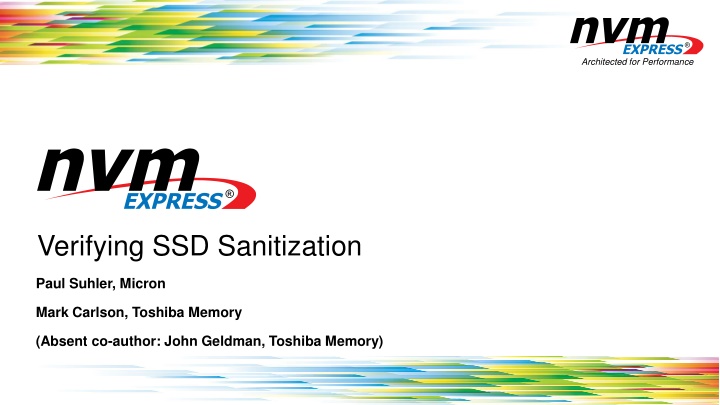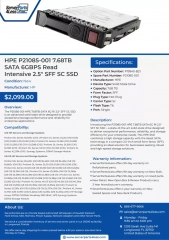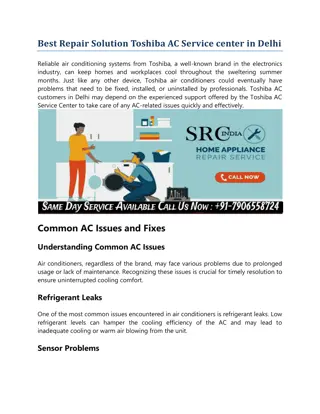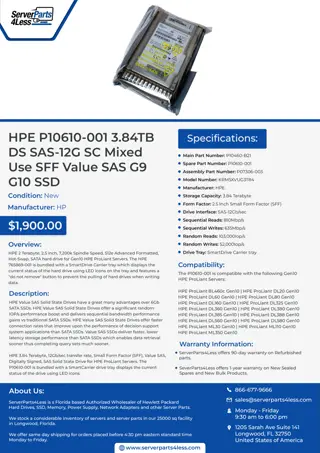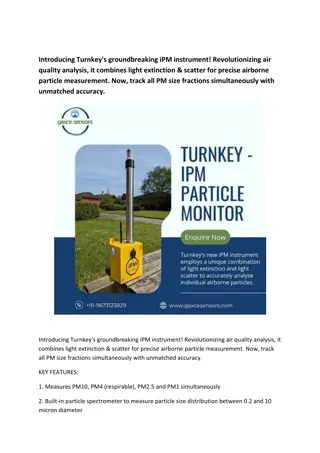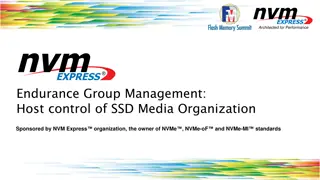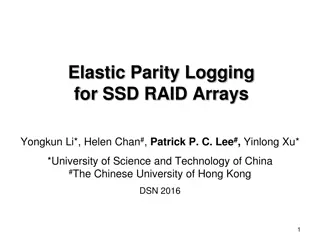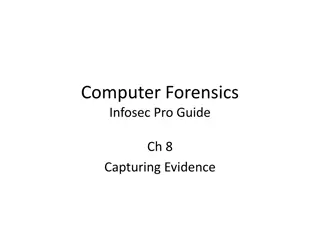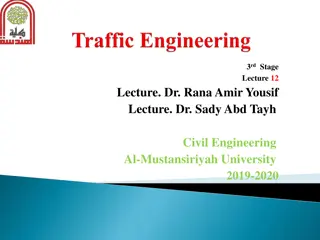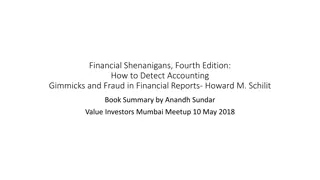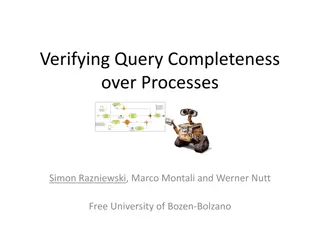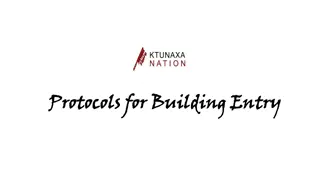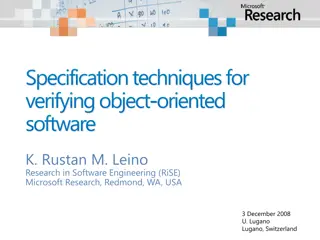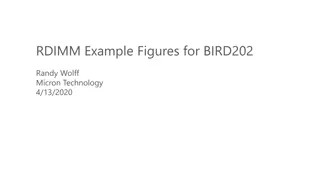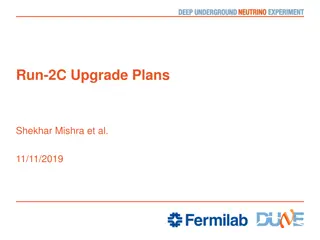Verifying SSD Sanitization
SSD sanitization is crucial to prevent data breaches when SSDs are repurposed or discarded. This comprehensive guide delves into the importance of sanitizing SSDs, the process in NVMe, different sanitize operation flavors, and the complexities due to how SSDs function. Learn why it's vital to keep your secrets safe when transitioning SSDs and how the unique behavior of sanitization ensures data security.
Download Presentation

Please find below an Image/Link to download the presentation.
The content on the website is provided AS IS for your information and personal use only. It may not be sold, licensed, or shared on other websites without obtaining consent from the author.If you encounter any issues during the download, it is possible that the publisher has removed the file from their server.
You are allowed to download the files provided on this website for personal or commercial use, subject to the condition that they are used lawfully. All files are the property of their respective owners.
The content on the website is provided AS IS for your information and personal use only. It may not be sold, licensed, or shared on other websites without obtaining consent from the author.
E N D
Presentation Transcript
Architected for Performance Verifying SSD Sanitization Paul Suhler, Micron Mark Carlson, Toshiba Memory (Absent co-author: John Geldman, Toshiba Memory)
Why Sanitize SSDs? Returned, repurposed, or discarded storage devices probably contain confidential or personal data Just letting these devices go free leads to newspaper headlines A Sanitize operation deletes all user data from a storage device NVMe accessible storage, both host and firmware accessible, no matter how long it takes , ATA, and SCSI Sanitize commands were designed to erase all So when your SSD is ready to move on, you want Sanitize to keep your secrets 2
Sanitize in NVMe (part 1) A sanitize operation is requested by a sanitize command Sanitize operations affect all allocable media in the entire NVM subsystem There are three sanitize operation flavors : Crypto Erase; Overwrite; Block Erase When a sanitize operation begins the device will return errors on read/write commands until the operation is successful The operation automatically continues to complete even if the operation is interrupted by a power cycle (unique behavior to sanitize) 3
Sanitize in NVMe (Part 2) A sanitize command may tell the device to: keep the device blocked if the sanitize operation fails; or to allow unblocking the device if the sanitize operation fails Sanitize operation status is communicated through a log page: Sanitize Status Log page The Format NVM command overlaps with sanitize functionality but misses many of these characteristics (that is another talk) 4
Why Is This Complicated? SSDs are funky writers File systems both write data into random addresses as needed and overwrite as needed But NAND doesn t work that way it needs to fill physical circuits serially So SSDs have: Firmware that maps logical addresses known to the host to physical addresses known to the firmware Extra hidden storage available to the firmware to make this magically work This magic is every SSD vendor s secret sauce, every SSD vendor s IP 5
Nave Customer Says: Drive, prove that my data is sanitized This is the wrong question! What does sanitize do for you? A sanitize operation alters all user data in the NVM subsystem such that recovery of any previous user data from any cache, the non-volatile media, or any Controller Memory Buffer is not possible. Key points are that: The promise is made over the interface Sanitize affects all allocatable memory (more than what is accessible from the interface) Some implementations of some sanitize methods leave the media unreadable, so only de-allocation patterns are available Bad blocks that couldn t be sanitized are removed from the allocatable pool However, post sanitize checks can only check what is accessible from the interface 6
Can You Take the Drive at Its Word? Most of the time, yes But devices have been compromised (lessons from the past): NSA toolkits included firmware hacks that resulted in devices reporting success without actually erasing data For Self Encrypted Devices (SED), not sharing keys increases security: The security model of SED drives begins with the model that encryption keys have no path to escape device boundaries What can t be shared, can t be leaked 7
Less-Nave Customer Walk me through your sanitization firmware Not much improvement Doesn t prove bugs are not present Doesn t prove a given drive wasn t hacked Exposes SSD vendor s Intellectual Property What can be done? Spot check with random LBA reads to ensure expected results One time exhaustive LBA read (crawl) or sufficient random LBA reads for statistical process proof 8
Better: Third-Party Verification Test multiple instances of each vendor s drive Current private testing: Ontrack DriveSavers Possible future direction: NIST Sanitize Certification See Proposed Direction slide below 9
Third-Party Testing Process Vendors submit multiple units with same firmware Test all drives: Write known data across drive Perform sanitization without deallocation Examine addressable blocks through the interface to confirm the original data is not present Deeper testing may include demounting and directly accessing NAND dies Can be misleading (we ll discuss this on the next slide) Tester certifies that SSD/firmware combination meets standard 10
Testing Approaches Examine addressable blocks (per ISO/IEC 27040): Full verification for process validation: Read all blocks (checking for anything but zeros is difficult to automate) Representative sampling for ensuring a drive has been sanitized: Divide LBA space into at least 1,000 sections, take two disjoint samples per section, each sample covering at least 5% of the section Each new sampling run examines different samples from previous runs; samples are chosen pseudorandomly with a new seed Raw NAND content checking is hard to test without device vendor co-operation for: NAND values that have been encoded for zero/one balancing Identifying firmware blocks that aren t supposed to be changed Identifying bad blocks that could not be modified and ensuring these bad blocks are not allocable 11
Possible Direction: Government Certification NIST could establish a new FIPS certification program for sanitization of SSDs Certification that drive complies with a FIPS would carry more weight than certification that drive meets a private company s standard. This program (like FIPS 140) would include both testing and design review but with a lower scope of evaluation Standalone certification is preferred to encourage more participation, but this could be added to FIPS 140 12
Next Steps Discuss achievable scope limitations and testing schemes for NIST to establish an achievable certification program Needs device vendors and labs to discuss feasibility and effectiveness Discussions are underway with private testing companies and a NIST- certified lab Present interim status at FMS 2018 13
Thanks to Jon Tanguy (Micron) for his contributions Mike Danielson (Micron) for the idea of a certification initiative 14
Related Documents SP 800-88, Guidelines for Media Sanitization, Revision 1, December 2014 FIPS 140-2, Security Requirements for Cryptographic Modules, May, 25, 2001 ISO/IEC 27040, Information technology Security techniques Storage security, 2015-01-15 15
